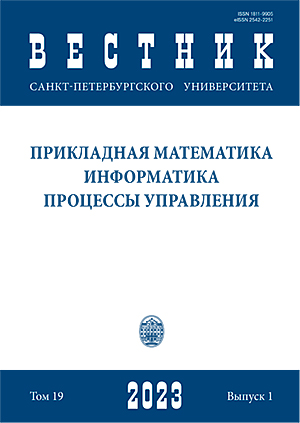Optimization approach to the design of nonlinear control system controllers
DOI:
https://doi.org/10.21638/11701/spbu10.2023.109Abstract
The optimization approach is applied to the synthesis and optimization of nonlinear real-time feedback optimal control system of a certain Maglev platform. To optimize the nonlinear control law, the integral functional criteria is minimized, which evaluates the quality of the dynamics of not one trajectory, but an ensemble of nonlinear trajectories of the system. The considered ensemble of trajectories covers the entire area of the engineering gap between the platform and the guide rails. In this area the magnetic forces provide highly nonlinear effects due to the considered design features of the object. At the same time, it is required to provide the stabilization within the entire engineering gap. It makes this statement to be a multi-input nonlinear control problem. The components of the feedback control law vector have a polynomial form of the state-space variables. As a result of computational optimization of trajectories ensemble, a class of Pareto-optimal polynomial regulators is constructed for considered control object. In the presented set, each Pareto-optimal point corresponds to a specific designed controller and investigated functional criteria which evaluates the entire ensemble of perturbed nonlinear trajectories. This allows a research engineer to choose various nonlinear regulators and achieve a compromise between stabilization accuracy and energy costs.
Keywords:
nonlinear system, stabilization, nonlinear regulators, Maglev, real-time feedback, ensemble of trajectories, optimization
Downloads
References
Downloads
Published
How to Cite
Issue
Section
License
Articles of "Vestnik of Saint Petersburg University. Applied Mathematics. Computer Science. Control Processes" are open access distributed under the terms of the License Agreement with Saint Petersburg State University, which permits to the authors unrestricted distribution and self-archiving free of charge.





